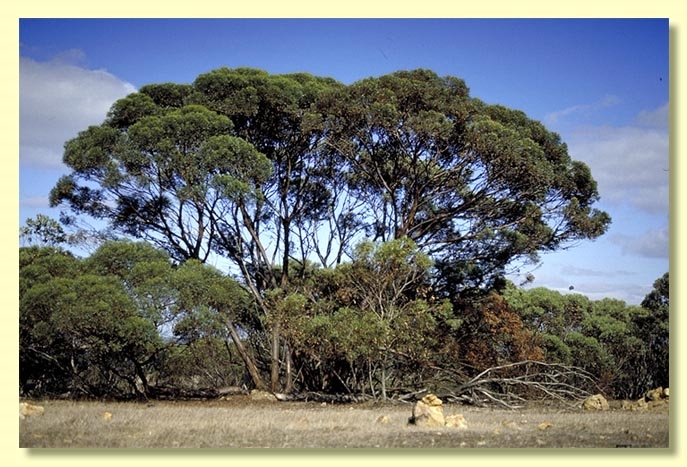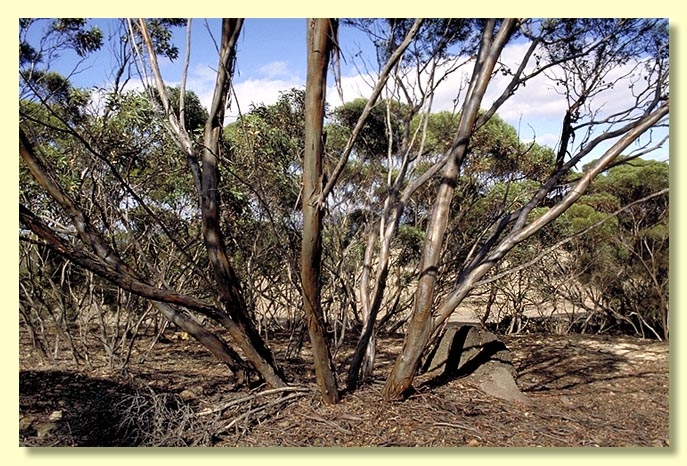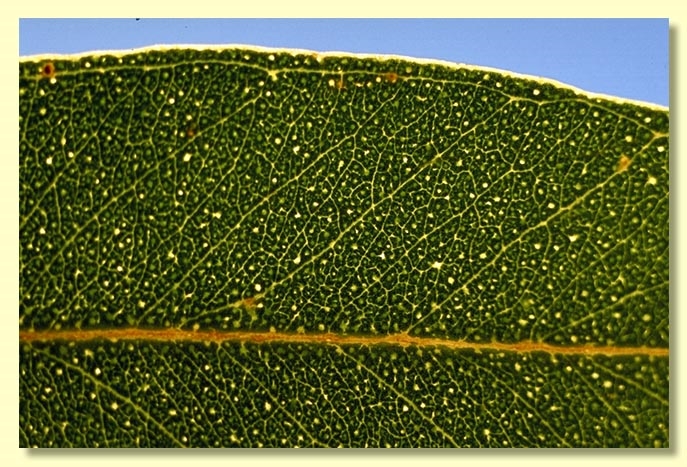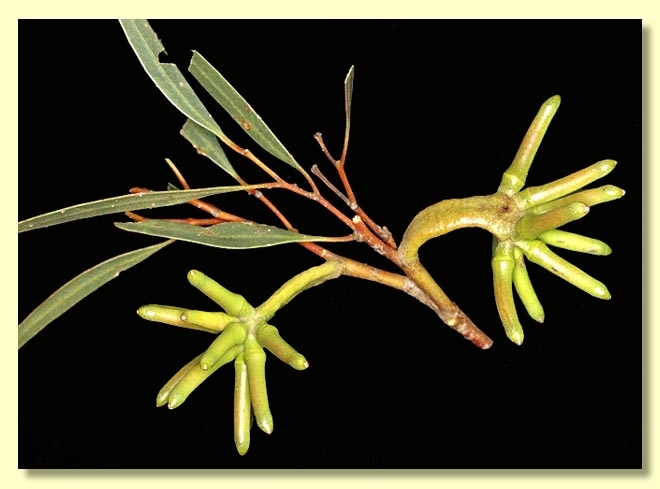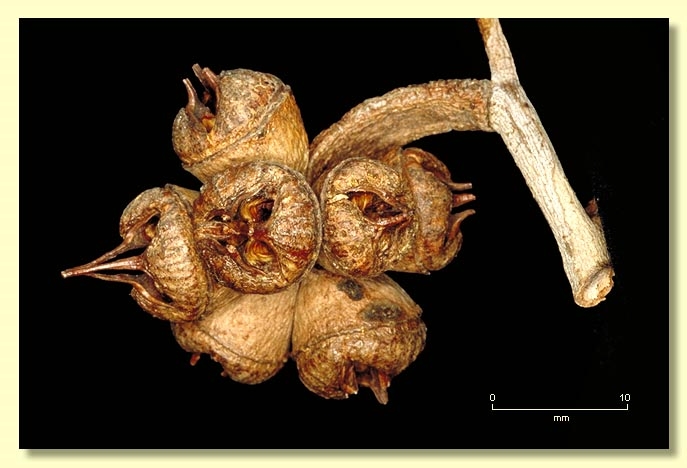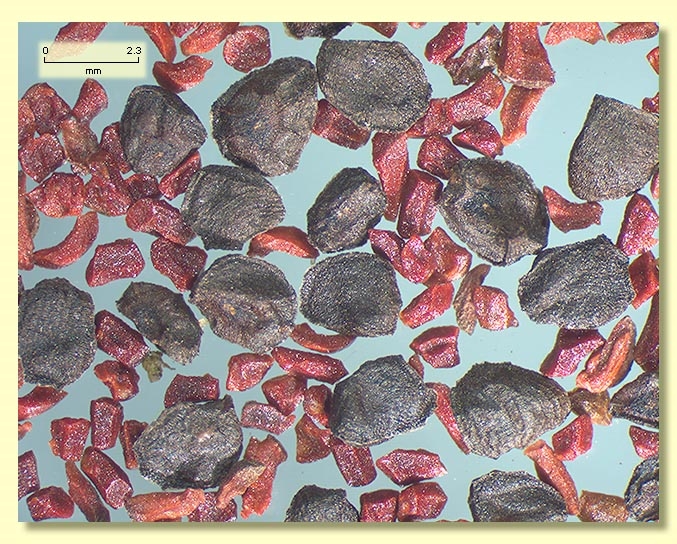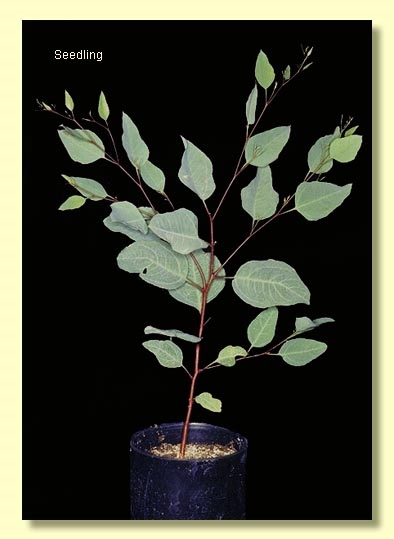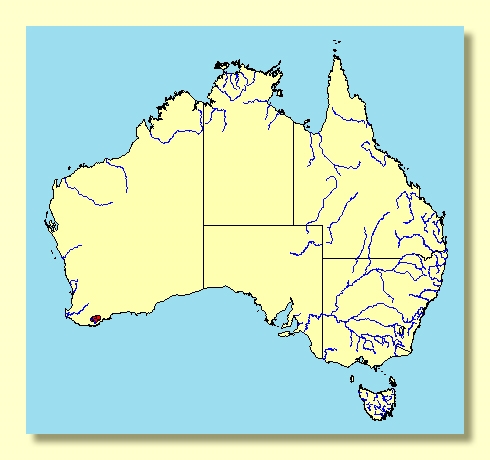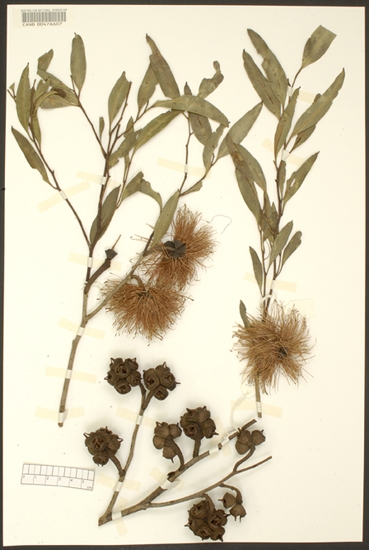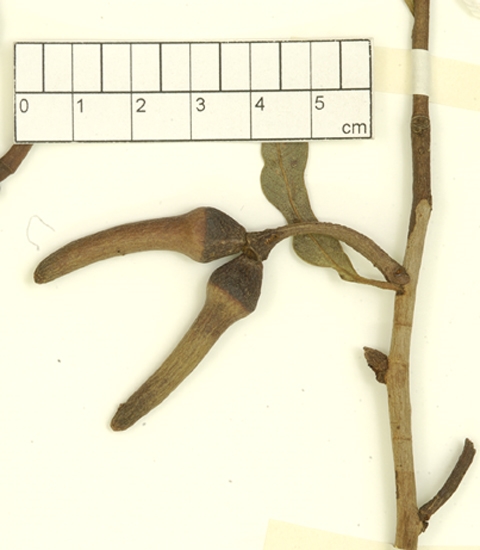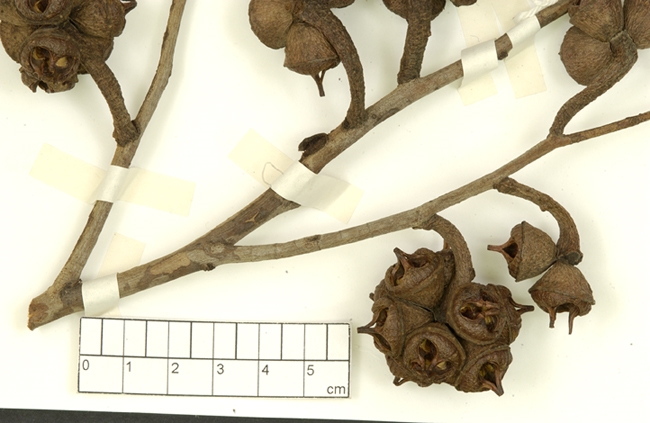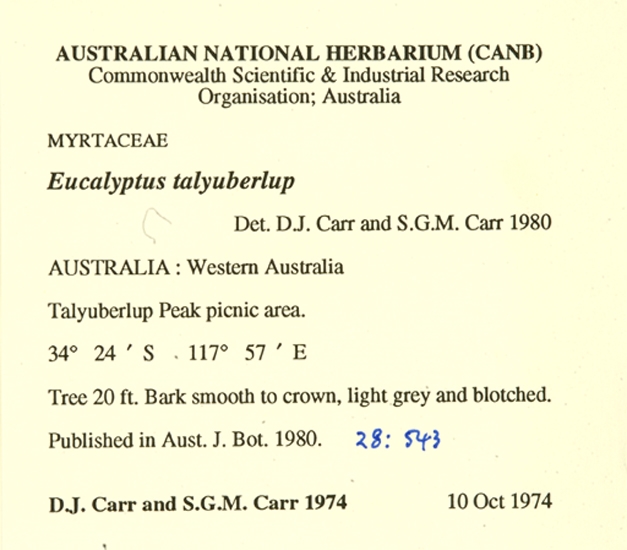Eucalyptus | Symphyomyrtus | Bisectae | Hadrotes | Lehmannianae | Liberae
Euclid - Online edition
Eucalyptus talyuberlup
Bark smooth throughout, pale grey to pale pinkish, yellow-green or pale brown, shedding in ribbons.
Branchlets lacking oil glands in the pith.
Juvenile growth (coppice or field seedlings to 50 cm): stems rounded in cross-section; juvenile leaves always petiolate, alternate, ovate to elliptic, 5–8 cm long, 3.5–6 cm wide, green.
Adult leaves alternate, petioles 0.5–1.5 cm long; blade narrowly lanceolate, 4.5–10.5 cm long, 0.6–2 cm wide, base tapering to petiole, margin entire, apex rounded and apiculate or pointed, concolorous, green, glossy, side-veins at an acute or wider angle to midrib, reticulation moderate to dense, intramarginal vein close to margin, oil glands few, island and intersectional.
Inflorescence axillary unbranched on spreading to down-turned broadly flattened peduncles 1.7–3.2 cm long, buds 7 to 13, sessile. Mature buds elongated (1.9–6.3 cm long, 0.3–1.3 cm wide), smooth, scar present or obscure at bud maturity (outer operculum shedding early), operculum horn-shaped, ca 3–5 times the length of the hypanthium, stamens erect, anthers narrowly oblong, versatile, dorsifixed, dehiscing by longitudinal slits, style long and straight, stigma tapered or oblique, locules usually 3, the placentae each with (6)8 vertical rows of ovules. Flowers yellowish green.
Fruit peduncle spreading to down-turned, campanulate to cupular, 1.1–2.2 cm long, 1.3–1.8 cm wide, dehiscing by elliptical holes formed when the 3 valves split along the sutures but remain joined at the apex, disc striate, covering the valves.
Seeds black, 1.5–3 mm long, ovoid to angularly so, dorsal surface scarcely reticulate, margin with or without a narrow partial flange, hilum ventral.
Cultivated seedlings (measured at node 10): cotyledons Y-shaped (bisected), robust; stems rounded in cross-section, scabrid to at least node 12; leaves always petiolate, opposite for 3 or 4 nodes then alternate, ovate to sub-orbicular, 4–6 cm long, 2.5–4.5 cm wide, bases truncate to round or tapering, margin entire or irregular, discolorous, green, only slightly scabrid. Scabridity is due to bristle-glands.
Flowering has been recorded in March, May, June, July and August.
A mallee or small tree endemic to Western Australia in the foothills of the Stirling Range extending south towards the Kalgan River. Smooth-barked with glossy dark green adult leaves and large buds and fruit which are easily seen in the crown. Mature buds are up to 6.3 cm long with long yellow-green stamens when flowering.
Eucalyptus talyuberlup belongs in Eucalyptus subgenus Symphyomyrtus section Bisectae subsection Hadrotes because the cotyledons are coarsely bisected, buds have an operculum scar, a long (inner) operculum and erect stamens, fruit are large, thick-rimmed and held rigidly. There are 12 species in subsection Hadrotes, two species (E. macrandra, E. cornuta ) have oil glands in the pith whilst 10 species lack these oil glands. Together these 10 species form series Lehmannianae, a group further characterised by having scabrid seedlings and fruit with exserted valves that remainmore or less fused at their tips after seed is shed, a feature shared with the more distantly related E. cornuta.
Of the ten species in series Lehmannianae four, E. newbeyi, E. burdettiana, E. talyuberlup, and E. megacornuta, have buds and fruit in each umbel basally free (subseries Liberae) whilst the other six species, E. lehmannii, E. conferruminata, E. arborella, E. mcquoidii, E. sinuosa and E. retusa have the buds (and fruit) in each axillary cluster fused basally (subseries Conjunctae ). The scabridity of the seedling leaves of these ten species is due to emergent multicellular oil glands.
Within subseries Liberae, E. talyuberlup with smooth opercula and E. burdettiana with almost parallel-sided, slightly warty opercula, are most likely to be confused. They can be distinguished by the width of the fruit (E. talyuberlup 1.3-1.8 cm wide, E. burdettiana 2-2.5 cm wide). Both these species have lignotubers. E. burdettiana has a very restricted in distribution on rocky coastal slopes in Fitzgerald River National Park. E. newbeyi and E. megacornuta are both mallets (lack lignotubers), the former with smooth buds and the latter with extremely warty very large buds.

